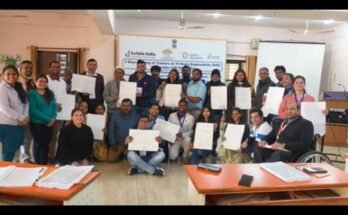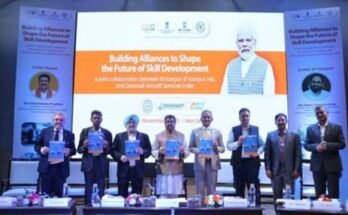New Delhi : Conduct survey in 82 cities to identify urban homeless people by the end of this year, complete pending reforms related to earmarking of land for affordable housing and issue subsequent instructions by the end of this month, submit a proposal regarding construction of 6 lakh houses to the Ministry of Housing and Urban Poverty Alleviation (MUPA) within this financial year — these are some of the targets set by the Niti Aayog’s joint working group (JWG) to revamp the urban landscape of Uttar Pradesh.
These targets have been recommended by the JWG through its ‘Action Plan for Uttar Pradesh’. To revive and revamp the urban landscape, the Niti Aayog has suggested various measures, including the aforementioned one, under the Pradhan Mantri Awas Yojana (Urban) and the Deendayal Antyodaya Yojana-National Urban Livelihood Mission (DAY-NULM).
The JWG was formed after Niti Aayog vice-chairman Arvind Panagariya-led 17-member delegation held day-long deliberations on the way forward for Uttar Pradesh with Chief Minister Yogi Adityanath and other senior state officials in Lucknow on May 10. The JWG was set up with six members — three members each from Niti Aayog and the state government — and was asked to “prepare a road map and identify action points for the development of UP”.
The JWG action plan has also suggested that 1.75 lakh candidates should undergo “skill training” under the Employment through Skill Training and Placement (EST&P) by March 2020. The programme, which comes under the DAY-NULM, provides skill training to the urban poor for enabling them to set up self-employment ventures or join salaried jobs in the private sector.
The maximum cost support provided for training under EST&P is Rs 15,000 per candidate (Rs 18,000 per candidate for north-eastern states and Jammu & Kashmir). However, sometimes, the cost of training varies according to course curriculum, infrastructure and materials needed for the course and course duration, among others. The training cost includes cost of candidate mobilization, curriculum design, trainer’s fees, raw materials required for training, assessment and certification, placement linkage, MIS and post-placement tracking of the candidates. No infrastructure development cost is supported under this component.
The JWG has also recommended the Uttar Pradesh government to submit its own action plan for the Pradhan Mantri Awas Yojana (Urban) of all approved cities of the state by August this year. Under the DAY-NULM’s self-employment programme, a total of 25,410 persons should be provided loans by March 2020, suggested the JWG action plan.
According to the Central government, this programme focuses on “financial assistance to individuals/groups of urban poor for setting up gainful self-employment ventures/micro enterprises, suited to their skills, training, aptitude and local conditions”. The selection of the beneficiaries under this programme is done by “community organizers and professionals of urban local bodies”.
The state government has also been suggested to complete street vendor survey and street vending plan in 67 cities by March 2020, under the ‘support to urban street vendors’ (SUSV) component of the DAY-NULM. In 2013, the Central government stated in its operational guidelines for the SUSV: “The NULM seeks to address the concerns of urban street vendors by facilitating access to suitable spaces for vending, institutional credit, improved skills and social security linkages. The ‘support to urban street vendors’ component of NULM sets out the strategy and operational guidelines with regard to this component.”
The JWG has also asked the state government to ensure 110 shelters under the ‘shelter for urban homeless’ programme of NULM. In its 2013 operational guidelines, the Central government stated: “The shelters should be permanent all-weather shelters for the urban homeless. For every one lakh urban population, provisions should be made for permanent community shelters for a minimum of one hundred persons. Depending upon local conditions each shelter could cater to 50 or 100 persons.”
These action points set by the JWG are on top of the targets set by the Uttar Pradesh government itself for various components of the DAY-NULM in 2017-18. The targets for 2017-18, which were sent by each state, including Uttar Pradesh, were approved by the Central government on June 2. The Centre approved the targets after they were found to be “as per objectives” of the scheme.
However, on June 2, the ministry told the states: “The expenditure under DAY-NULM may, however, be limited to the allocation made for the financial year 2017-18, conveyed vide letter of this ministry (MUPA) dated June 2, 2017. Release of additional funds over and above the allocation fund will depend on submission of requisite documents of the states, utilization of funds already available with the state, achievement of targets and availability of additional funds with the ministry.”
The targets set by the Uttar Pradesh government for the year 2017-18 in various components of the DAY-NULM are: 10,000 urban self help groups to be formed; 1 lakh urban poor persons to be trained; 10,200 persons to be given assistance under self-employment programme; 40 shelters to be constructed during the year; and completion of street vendor survey in 27 cities across the state.
Note: News shared for public awareness with reference from the information provided at online news portals.



